In 2013, a fossil of a previously unknown shark species was discovered in New Mexico. The 6.7-foot shark, dubbed “Godzilla Shark,” is thought to have lived around 300 million years ago. The unknown species was given the nickname Godzilla shark or dragon shark because of its huge jaw and the sharp spines on its dorsal fins. Scientists were stunned by this unusual shark, as it’s the first one of its kind they’ve ever seen. It took nearly seven years to clean and fully identify the fossil. In 2021, the “Godzilla Shark” received the official scientific name Dracopristis hoffmanorum or Hoffman’s Dragon Shark. The Hoffman family owned the land where this exciting fossil was found.
This discovery is significant because it represents the first known occurrence of this type of shark in the fossil record. Let’s discover more about the incredible Godzilla shark, its unique features, and how it compares to modern shark species.

By comparison, the Godzilla Shark was much smaller than the Megaladon — the biggest shark that ever lived.
©Gil Cohiba/Shutterstock.com
The Godzilla Shark Fossil: Its Discovery
A team of researchers from the New Mexico Museum of Natural History and Science (NMMNHS) discovered the Godzilla Shark. They found the extinct animal fossil in the Manzano Mountains while learning about other fossils in the area.
Paleontologist John-Paul Hodnett discovered the shark fossil while sifting through limestone with a pocket knife. After first thinking he’d uncovered some kind of limb bone, Hodnett realized he’d found something denser like a tetrapod (animals with four feet). But a team from NMMNHS later verified that what Hodnett had discovered was an ancient species of shark.
The Godzilla Shark is just one of many interesting fossils discovered in New Mexico. The state is home to a wealth of fossil-bearing rocks, including some of the oldest rocks on Earth. The area in the Manzano Mountains where this shark lived was once covered by a seabed, where scientists think this shark may have hunted in areas of shallow water.
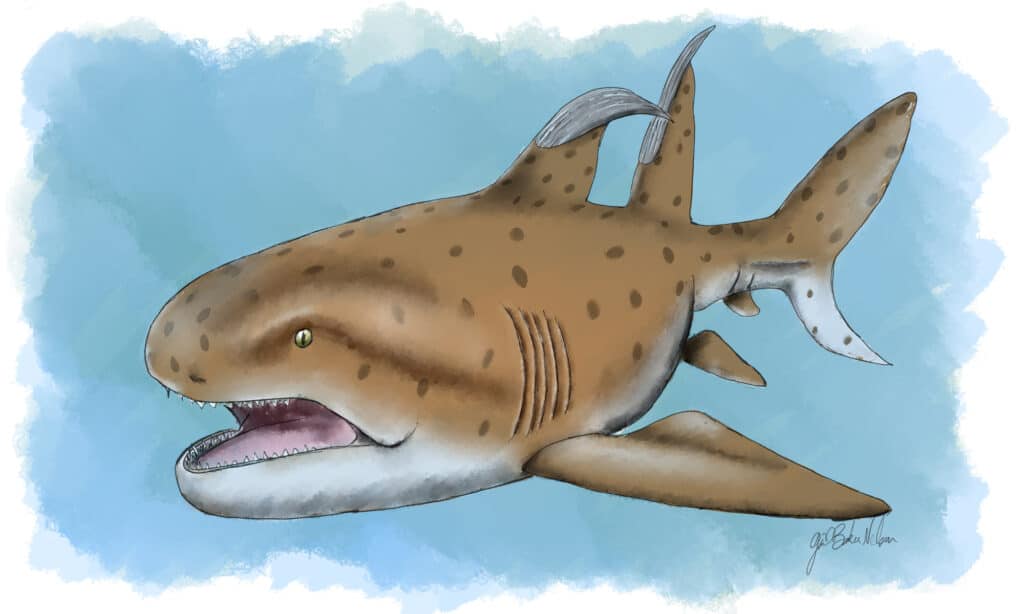
Why Scientists Were Stunned by the Godzilla Shark Discovery
Scientists were stunned by the size and appearance of the Godzilla Shark because it’s an exciting discovery of what was probably the largest shark of its time. But, even more exciting, the Dracopristis hoffmanorum, or Hoffman’s Dragon Shark, was likely an apex predator at or near the top of its food chain. What these details mean to scientists is that this sizable shark with unique physical traits significantly impacted the environment of its time.
Researchers believe that Dracopristis hoffmanorum lived and went extinct during the Pennsylvanian period, a sub-period of the Carboniferous period existing around 300 million years ago.
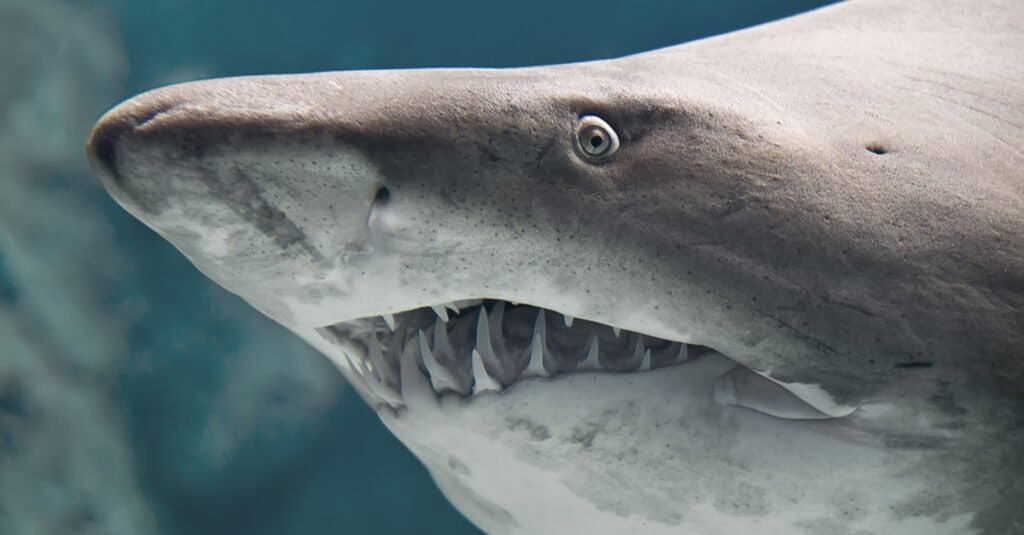
Like
bull sharks
, Godzilla Sharks had smaller teeth than some modern sharks.
©Havoc/Shutterstock.com
The Godzilla Shark’s Unique Features
The Godzilla Shark is a unique and fascinating creature. At 6.7 feet long, this shark was one of the largest of its kind during its lifetime. By comparison, many modern sharks are much bigger. Yet this ancient shark was massive for its time.
The Godzilla Shark’s large size was likely due to the fact that it lived in the time before dinosaurs roamed the Earth. This timing meant less competition for food and resources on land and in the sea.
Additionally, this large shark had 12 rows of short teeth perfect for tearing its prey apart. The adult shark’s teeth found fossilized in New Mexico are similar to other extinct spined fish called Ctenacanthiformes.
Another unique feature of the Godzilla Shark is the spines on its dorsal fins. These spines may have helped the shark swim faster and maneuver better in the water. And if this fascinating shark had any predators during its time, researchers believe its sharp fins were defensive weapons.
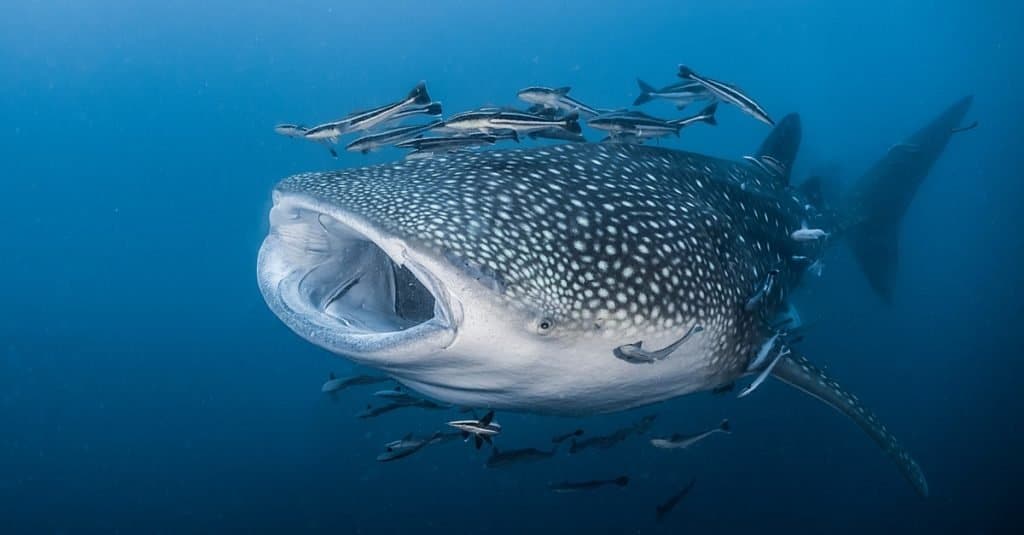
Whale sharks
can grow over 40 feet long.
©Onusa Putapitak/Shutterstock.com
Godzilla Shark vs. Modern Sharks: What Are Some Differences?
Although the Godzilla Shark is long gone, modern sharks still hold many similarities to their ancestor. For example, great white and whale sharks are descendants of Hoffman’s Dragon Shark. However, some key differences exist between these modern sharks and Dracopristis hoffmanorum.
The most obvious difference is size. Modern sharks can grow to be much larger than the 6-foot Godzilla Shark. For example, great white sharks can grow up to 24 feet long, while whale sharks can grow up to 46 feet long. This size difference is because modern sharks have evolved over time, as have their environment and prey.
Another difference between the Godzilla Shark and modern sharks is that the Godzilla Shark was no doubt a carnivore. However, there are some modern sharks classified as omnivores. Researchers think Godzilla Sharks ate crustaceans and small fish in shallow coastal waters. By comparison, modern sharks are still mainly carnivores eating similar types of fish. Yet scientists recently discovered that bonnethead sharks also eat seagrass.
Lastly, modern sharks don’t have spines on their fins. Scientists believe the spines on the fins of Godzilla Sharks were an evolutionary adaptation to help the shark swim faster and defend itself from predators. Modern sharks don’t have these spines because they’ve evolved different adaptations for survival, such as a sleek body for swimming fast and powerful jaws for catching prey.
Overall, this shark was a unique creature that was an important part of its ecosystem. Although it’s now extinct, this ancient shark has helped scientists understand more about the evolution of modern sharks.
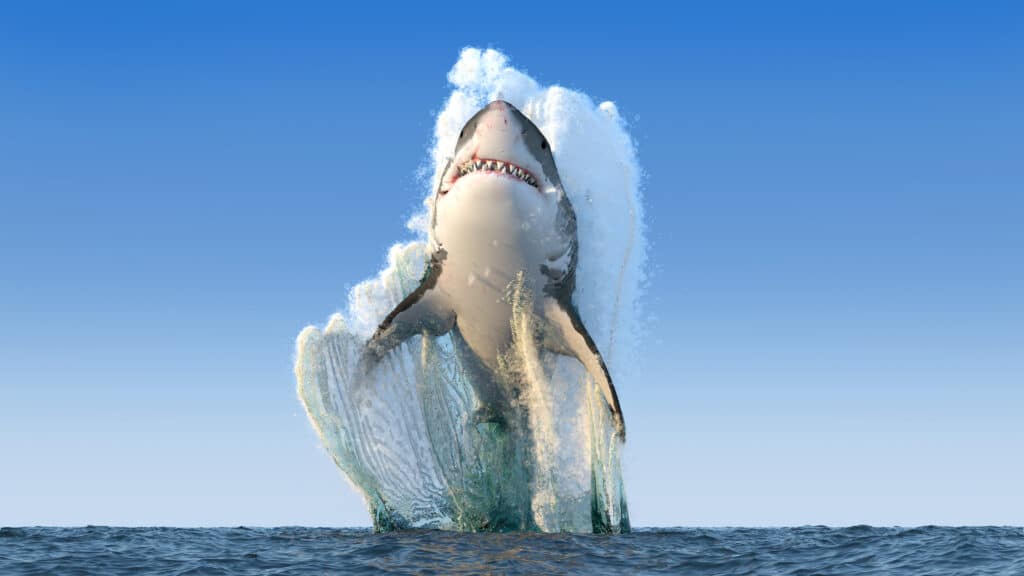
Modern sharks likely evolved from ancient sharks like
Dracopristis hoffmanorum.©Alexyz3d/Shutterstock.com
Why Did Godzilla Sharks Become Extinct?
The likely explanation for the extinction of Godzilla Sharks is a change in their environment. The Pennsylvanian period was a time of significant environmental change, and it’s thought that this shark couldn’t adapt to these changes quickly enough.
One of the biggest environmental changes during the Pennsylvanian period was a decrease in atmospheric oxygen. This decrease in oxygen probably made the waters too warm for Godzilla Sharks to survive. Additionally, the changing environment may have also affected the food supply for this shark, leading to its eventual extinction over 300 million years ago.
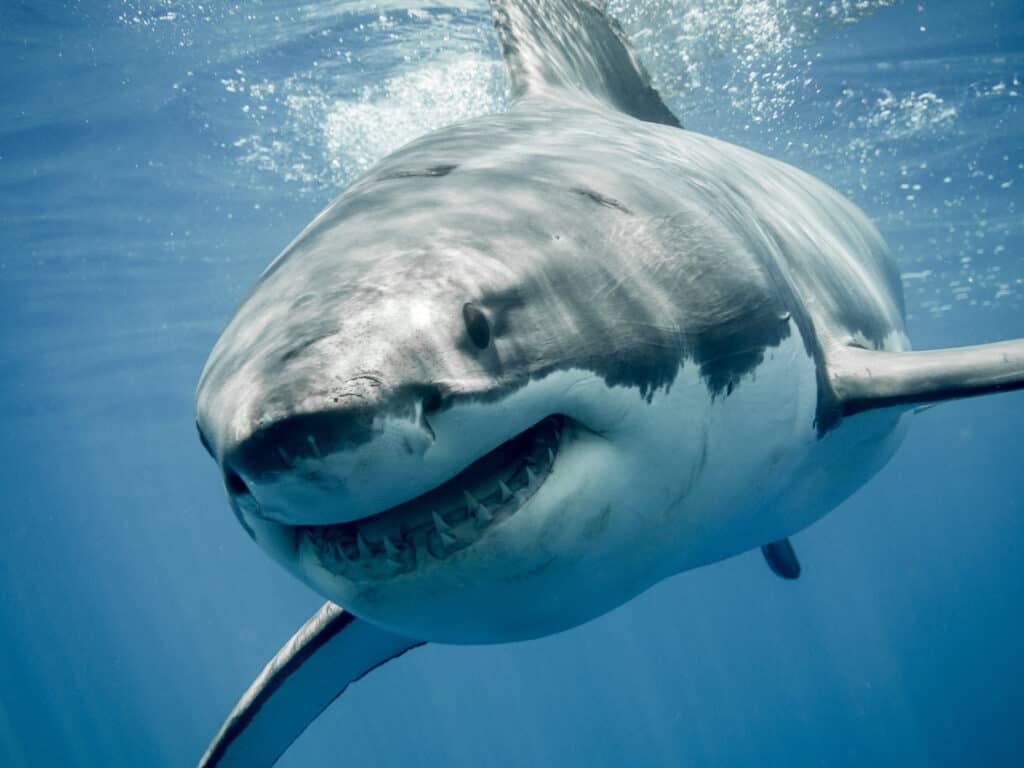
The
great white shark
is a true shark.
©Ramon Carretero/Shutterstock.com
Was the Godzilla Shark Really a Shark at All?
Some experts might point out that the Godzilla Shark isn’t a “true shark.” When modern scientists finally classified it by 2021, this shark joined the order of extinct spined fish called Ctenacathiformes. However, Ctenacathiformes are in the sub-class called Elasmobranchii, as well as an infraclass called Euslachii. All these classifications mean that the Dracopristis or Godzilla Shark is related to sharks but not true sharks.
What is a true shark? A true shark classification is in the clade Selachimorpha (or Selachii). Selachimorpha is a superorder of fish with cartilage, among other common characteristics. And a “clade” is a set of organisms with the same ancestors.
So what does all this mean for the Godzilla Shark’s classification? In simple terms, it means that ancient shark-like animals, including this one, are probably relatives of modern sharks.
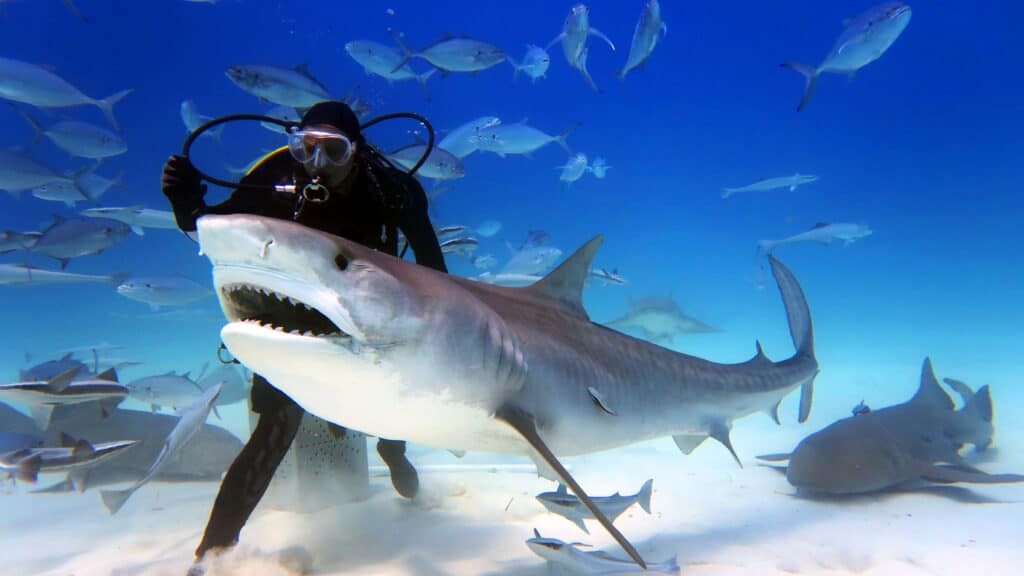
Modern and ancient sharks are fascinating creatures to study.
©HQuality/Shutterstock.com
The Godzilla Shark is a Stunning Find
Scientists were stunned to find the ‘Godzilla Shark’ fossil, but this discovery has become an exciting source of information for generations to come. We learned that the Dracopristis hoffmanorum, or Hoffman’s Dragon Shark, was a 6-foot-long extinct shark that lived during the Pennsylvanian period. And we learned that this ancient animal has been extinct for about 300 million years.
With its unique shark spines and many teeth, this ancient fossil is a thrilling specimen for study and comparison to modern sharks. In addition, this stunning find helps scientists better understand the environment of this period and how animals like this one survived as long as they did.
Despite being extinct, the discovery of the Godzilla Shark has left a lasting impact on the scientific world. We hope shark lovers and animal enthusiasts enjoy learning about this discovery for many years to come.
The photo featured at the top of this post is ©
Thank you for reading! Have some feedback for us? Contact the AZ Animals editorial team.






